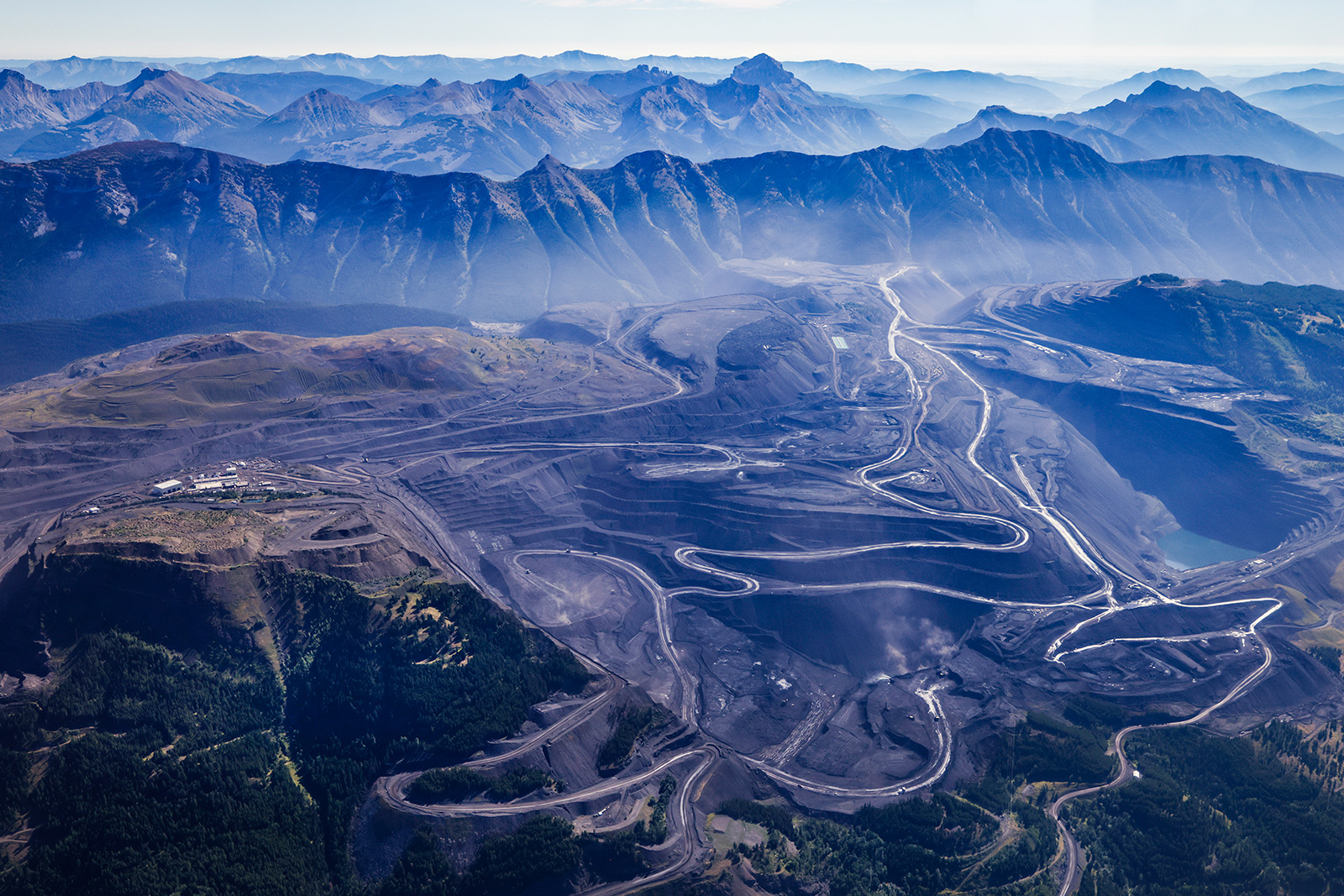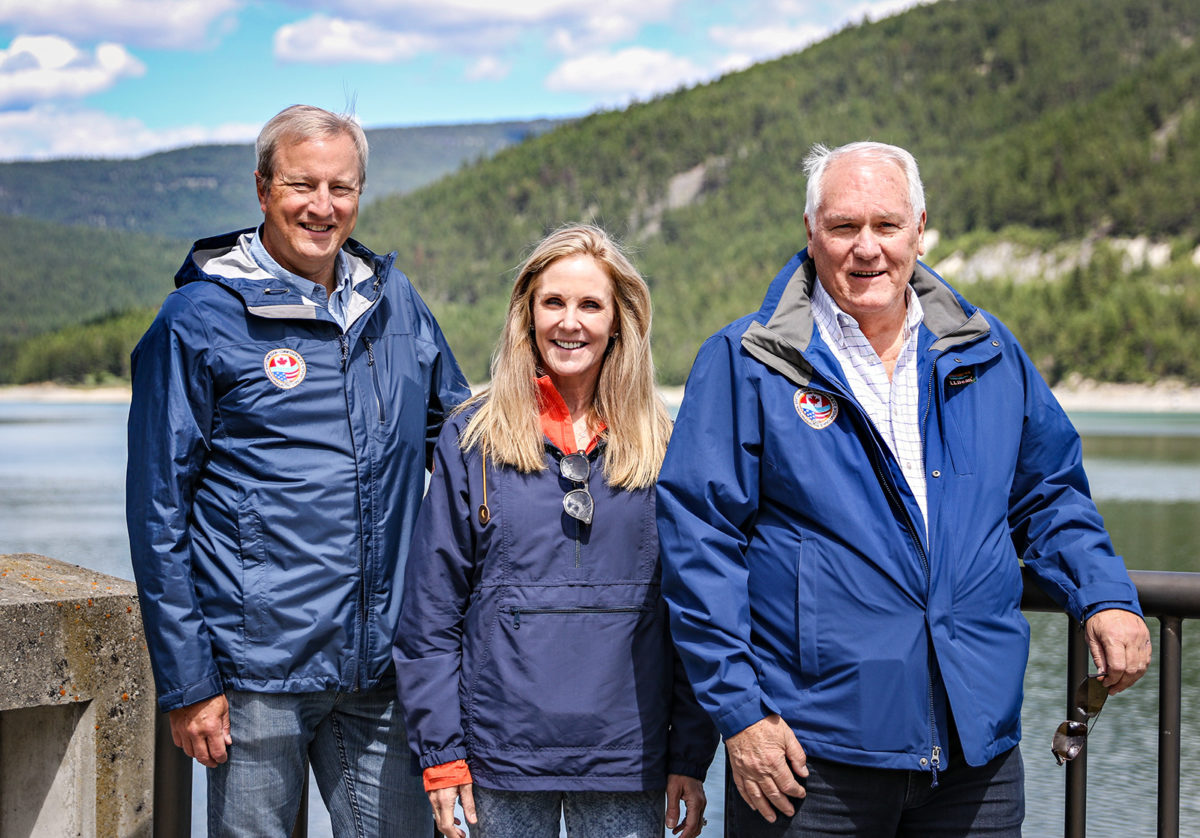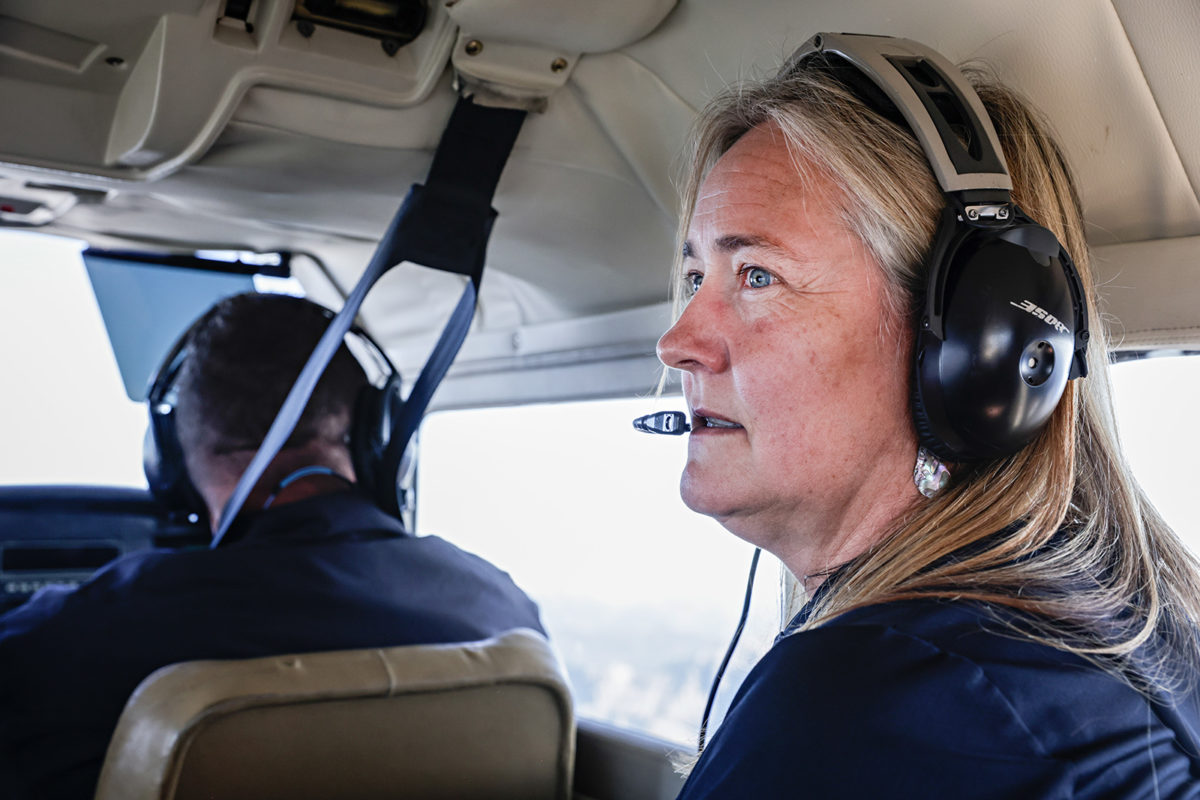U.S., Canada Agree to IJC Intervention on Transboundary Mining Pollution
Calling it 'an important first step' to solve mining pollution on the Elk-Kootenai River watershed, tribal and First Nation governments in Montana, Idaho and British Columbia cheered the long-awaited reference to the International Joint Commission
By Tristan Scott
Federal governments in Canada and the U.S. have agreed to ask the International Joint Commission (IJC) to study and take steps to mitigate the inflow of mining pollution to the Elk-Kootenai River watershed through a joint reference, signaling a breakthrough in bilateral talks that have stalled for years, even as the company that owns the mines expands its footprint along the border with Montana.
The agreement was announced Monday by tribal and First Nation governments in Montana, Idaho and British Columbia (B.C.) who cheered the development after years of intensifying pressure on the U.S. and Canada. The reference means that an independent governance body representing both nations will convene to craft solutions to address the contaminants spilling into a watershed that crosses the international boundary at Lake Koocanusa and spans traditional Aboriginal territory.
The federal governments of both U.S. and Canada also confirmed the reference on Monday and issued a joint statement from the Ambassador of Canada to the United States, Kirsten Hillman, and the Ambassador of the United States to Canada, David L. Cohen. According to Pierre Cuguen, a spokesperson for Global Affairs Canada (GAC), both countries “have reached an Agreement-in-Principle (AIP) on next steps to further bilateral cooperation to reduce and mitigate the impacts of water pollution” in the transboundary watershed.
“The AIP provides a plan for Canada and the United States, with the assistance of the International Joint Commission, to take a holistic look at the watershed and build a shared understanding of the best available water quality data and science,” Cuguen said in an email, adding that both countries will work in concert “with Indigenous Peoples and Tribal Nations and alongside provincial and state partners in the region.”
“The Government of Canada is committed to safeguarding the transboundary Elk-Kootenay watershed to protect the people and species that depend on this vital river system,” according to Cuguen (the Canadian and First Nation spelling of Kootenai is “Kootenay”).
Meanwhile, tribal leaders on both sides of the border were triumphant after urging a reference for more than a decade, often with vague support from their federal counterparts.
In Montana, Michael Dolson, chairman of the Confederated Salish and Kootenai Tribes (CSKT), said the IJC reference is an essential first step in protecting fish and water quality in Lake Koocanusa and the Kootenai River.
“For too long, the U.S. and Canada have stood by while our waters suffered,” Dolson said in a prepared statement released Monday. “We are encouraged by the federal governments’ change in direction and the progress that was achieved when we all worked together these past months. We will continue to work tirelessly to restore our rivers and the fish and wildlife that depend upon them. We’re at the beginning of what will likely be a long process, one that will require sustained effort from all governments involved.”
For decades, open-pit coal mines located in the Elk Valley of southeast B.C. have leached selenium, nitrate, and sulphate into the Elk and Kootenai rivers. Since 2012, Indigenous leaders from the Ktunaxa Nation, the CSKT and the Kootenai Tribes of Idaho (KTOI) have been ramping up pressure on Canada and the U.S. to address the water quality crisis.
In March 2023, Prime Minister Justin Trudeau and President Joe Biden announced the two nations had reached “an agreement in principle” to “reduce and mitigate” the Canadian mining pollution. However, two months later the tribal representatives learned via email that Global Affairs Canada (GAC) was at odds with the idea of a reference proposal. This prompted a coalition of Indigenous governments to call upon both federal governments to work through the impasse and agree on a path forward. At that meeting, which took place on Ktunaxa turf in B.C., the governments collectively committed to find a solution — through a reference to the IJC — by the end of the year.
“After nearly three months of intense negotiations, the governments reached agreement, and almost exactly a year after the Prime Minister and President’s statement, the reference has finally been issued to the IJC,” according to Monday’s announcement.
“It is good to see that the U.S. and Canada — in partnership with the Ktunaxa Nation — have started collaborating effectively on this issue and are working toward meeting their commitment to reduce and mitigate the mining pollution in the Kootenai/y watershed,” Kathryn Teneese, chair of Ktunaxa Nation Council, said in her prepared statement. “However, just as this agreement could not have been reached without the deep involvement of the Ktunaxa Nation, future progress will require meaningful inclusion of Ktunaxa knowledge and stewardship. We are setting the foundation for an IJC, and we welcome the IJC Commissioners’ involvement in this issue. We hope this is the beginning of a collaborative, transparent, and effective process that will restore the waterways in the heart of ʔamakʔis Ktunaxa that are vital to the Ktunaxa ʔakⱡsmaknik (people).”

Mining operations in the Elk Valley and Kootenai River watershed have created a legacy of pollution in the binational waters, which is a violation of Article IV of the 1909 Boundary Waters Treaty. The treaty was established specifically to address issues related to the management of transboundary waters between Canada and the United States. Under Article IV, disputes over pollution can be referred to the IJC, whose expertise and institutional independence make it well suited to arbitrate the transboundary pollution issue.
When the IJC receives a government request, called a reference, it appoints a board with equal numbers of experts from each country. Board members are chosen for their professional abilities, not as representatives of a particular organization or region. The reference asks the IJC to convene a governance body that will develop an action plan to reduce and mitigate the impacts of mining pollution in the Elk-Kootenai watershed. The body will be comprised of government stakeholders with jurisdiction and legal obligations in the watershed.
“The reference also establishes an IJC Study Board that will bring experts and knowledge holders together to share knowledge and data in a coordinated, transparent process,” according to Monday’s announcement.
“This is an important first step in addressing the serious pollution problem in the Kootenai Watershed, and I am glad to see that the U.S. and Canada are finally taking their commitments to Indigenous peoples, the environment, and the international Boundary Waters Treaty seriously,” Gary Aitken Jr., Vice Chairman of the Kootenai Tribe of Idaho, said in a prepared statement. “For decades, mining has impacted our waters, our people, and our resources. While we were seeking action, things moved far too slowly, and the federal government looked the other way. We are finally starting a process where there can be collaboration, trust, and transparency. Ktunaxa said we would not stop until there was an action plan, and we look forward to seeing that through to ensure the real work of healing the river is achieved.”

In 2022, all six members of the IJC appeared to agree that a reference was an appropriate course of action on the transboundary Elk-Kootenai watershed when they authored an unprecedented letter to Canadian Prime Minister Trudeau and President Biden explaining they are prepared to act on a reference with or without GAC’s consent, even as they expressed a strong desire to have both nations come to the table.
“We have heard from agencies, stakeholders, and Indigenous communities about their assessments that the problem is growing more critical,” according to the letter. “Further, we understand the United States government is discussing the merits of a unilateral reference to the IJC on this matter. While we would accept and act on such a reference, as prescribed in the Treaty, we believe it is in the best interests of all concerned if a joint reference were made to the IJC.”
In the U.S., both Montana and Idaho recently took steps to address the selenium problem by adopting their own site-specific water quality standard for selenium at the border, a protective value crafted through years of scientific work to safeguard fish species in Lake Koocanusa and the Kootenai River. The standard for dissolved selenium concentration established by Idaho and Montana, and approved by the U.S. EPA, is 0.8 micrograms per liter on Lake Koocanusa and 3.1 micrograms per liter on the Kootenai River.
As evidence of the compounding contamination issues, the U.S. Geological Survey recently published a report revealing that selenium and nitrates in the Elk River have increased by 581% and 784%, respectively, signaling unprecedented increases of the pollutants in the watershed. The contaminant increases provide additional evidence of the regulatory failures of the mines owned by Teck Resources; specifically, the company’s Elk Valley Water Quality Plan approved in 2014, upon which Teck’s mining permit was contingent.
For their parts, both Teck and the B.C. government have pointed to the Elk Valley Water Quality Plan as the strongest evidence of their efforts to curb the pollution. In 2013, the B.C. government ordered Teck Coal to address the issue of contaminants in the Elk River drainage, resulting in the Elk Valley Water Quality Plan and Technical Advisory Committee. Between 2014 and 2020, Teck spent more than $1.2 billion implementing the plan. Since 2020, the company says it has quadrupled its daily treatment capacity to process 77.5 million liters of water.

Erin Sexton, a senior research scientist with the University of Montana’s Flathead Lake Biological Station who was among the first to document the extent of the pollution at the border, and who participated in the development of the reference, said it is unique in that it was developed tri-laterally across the governments of the U.S., Canada and the entire leadership of the governments of the transboundary Ktunaxa Nation.
“To my knowledge this is the first time that the U.S. and Canada have co-developed a reference with a transboundary Indigenous Nation,” Sexton said, rather than crafting one internally and just bilaterally across the U.S. and Canada.
Sexton also noted that the reference marks the first time in nearly 40 years that there has been an IJC reference for a transboundary watershed shared with the Province of B.C., the last one occurring on the transboundary Flathead River in northwest Montana for a mine that was proposed in the B.C. headwaters of the North Fork Flathead River. Coming four decades later, today’s reference also comes at a critical time, Sexton said, “when selenium levels in Koocanusa are exceeding our Clean Water Act water quality standard … meaning that selenium levels already exceed healthy levels for water quality and fish in the reservoir.”
“It is also critical to get moving on this reference given the recent data from USGS showing that Teck’s mitigations for addressing their mine pollution in the Elk Valley are not reducing pollution in Koocanusa or downstream in the Kootenai River,” Sexton said. “The scale of the mitigations is not large enough to address the scale of the legacy and ongoing pollution.”
“Here in Montana, we adopted a very protective water quality standard from one of the mines’ worst contaminants, selenium, and B.C. and Canada have been violating that water quality standard since it was adopted into law in February 2021,” Sexton added. “That is why it is such an important step forward for the US and CA to refer this issue to the IJC, under the Boundary Waters Treaty.”
U.S. Sen. Jon Tester, D-Mont., who has been calling on the U.S. State Department to address the transboundary mining crisis since 2015, and officially requested an IJC reference last November, said in a statement issued Monday that he’s “pleased to see Canada finally coming to the table to find solutions.”
“We’ve known for years that mining in British Columbia has been polluting the Kootenai watershed, which is why I’ve been pushing for substantive action for nearly a decade,” according to Tester’s emailed statement. “This is a big first step towards addressing the problem, but I’ll continue to put pressure on the State Department to hold the Canadian government accountable in order to protect one of our state’s most important watersheds.”